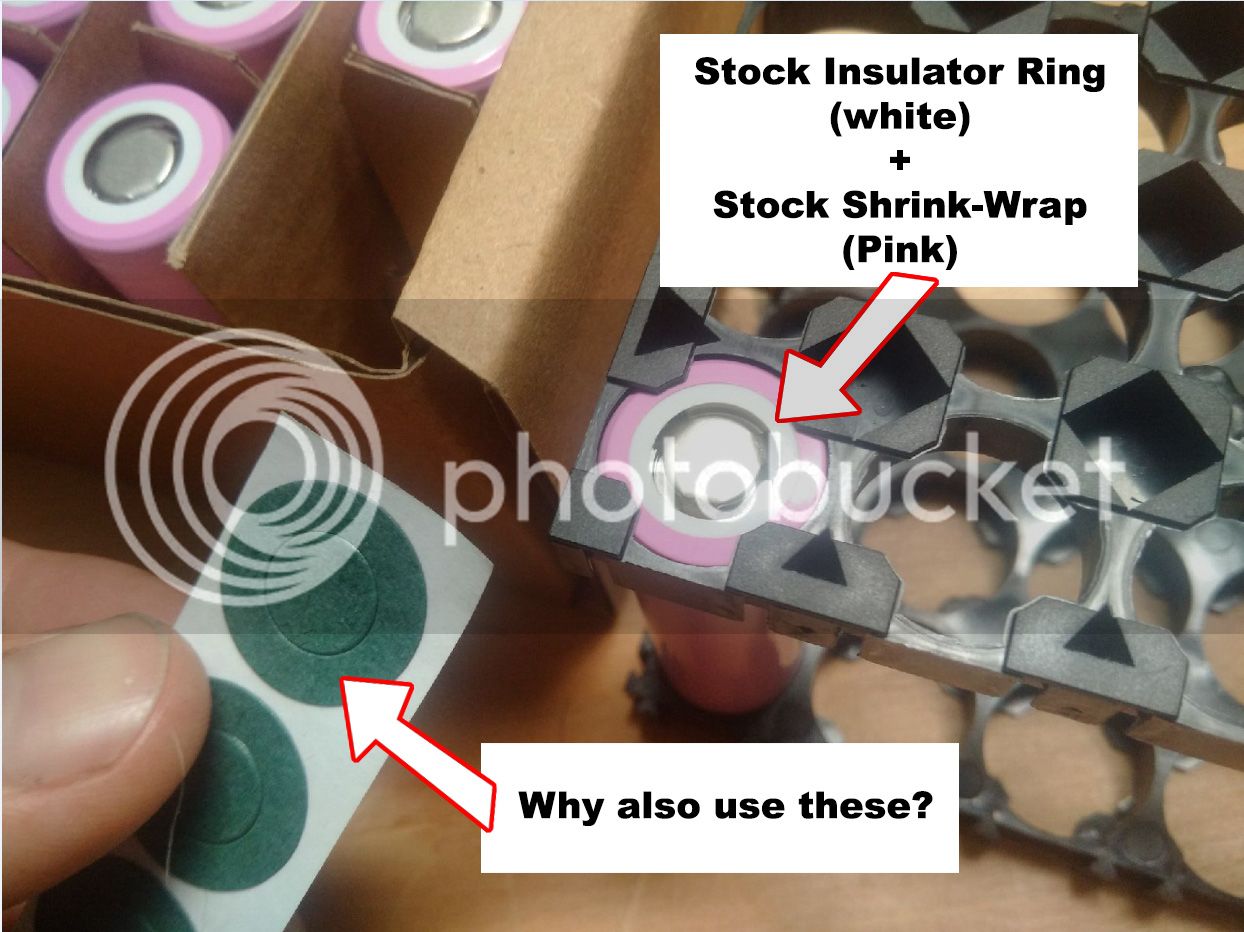I can't tell the readers how many home built packs I have seen where the builder bought a big roll of nickel ribbon, instead of nickel bus material that was laser-cut and professionally de-burred on an industrial scale. Then, the builder cut the nickel ribbon with shears and didn't de-burr the cut.
But...deleting fiber washers saves you $2.
Also, Bosch packs have a BMS that prevents them from providing high amps. A home pack-builder might design a pack that gets hot. 500W from 36V is 14A, and using a common 5P pack, that's roughly 3A per cell. Fiber washers will not stop the pack from getting hot, but if it does, the shriveling plastic will not cause a short when the nickel ribbon on the positive end crosses the positive nipple and negative shoulder.
But...deleting fiber washers saves you $2.
Bosch uses a hardcase and internal padding, along with high-quality insulating tape, as a safety measure against crashes and long-term vibration. I have seen countless home-built packs that had a single layer of shrink wrap, and are mounted inside a cloth triangle bag (you should insert thin padding and hard side-panels for crashes).
But...deleting fiber washers saves you $2.
Crap materials can look the same as quality materials, especially from China. Bosch uses quality materials. Bosch packs (on ebikes and cordless tools) will shut down the battery permanently for a variety of faults, but many builders do NOT use that kind of BMS, if they use a BMS at all...




